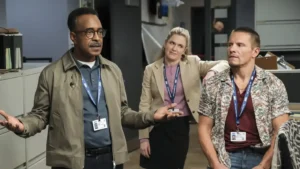13th Documentary opinion
This documentary explores the inherent racism that’s been woven into America’s history to present day. America is 5% of the world’s population but has 25% of the world’s prisoners. Known as the land of the free, the United States has the highest rate of incarceration in the world. This documentary explores the implications of social exclusion on a person due to their ancestry. They go through each decade step by step. Showing not only the increase in incarcerated Americans across time but also the struggle African-Americans have had in gaining the most basic civil rights.
Where do you start on a topic as heavy as this?
The documentary starts from the very beginning. The 13th amendment was passed in 1865, which abolished slavery and granted freedom, with the exception of criminals. When slavery was abolished, four million people were suddenly free and the economy was suddenly in disrepute. This saw a huge increase in African Americans being incarcerated for even the smallest types of crime, to get the country’s labor force especially needed after the civil war. Despite the ethical implications.
Regardless of the fact that America was building itself back up using the people they stole, enslaved, released and then incarcerated again, racism was at an all-time high. The documentary mentions the film The Birth of a Nation which spun a tale of epic proportions. It enforces the stereotype that black men often took advantage of white women. The film also saw an increase in activity in one of the most profound terrorist groups in history, the Ku Klux Klan (KKK).
Could it get any worse?
We aren’t even halfway through the nightmare yet. Emmett Till was shown briefly at the start of the documentary and in more depth later on. Emmett Till was a fourteen-year-old boy who was visiting family in Mississippi from Chicago in 1955. He was accused of wolf whistling at a white woman. A week later he was found dead. It was later discovered Emmett had been stolen from his family’s home (where he was visiting) after which he had been mutilated, shot, lynched before then being thrown into the river.
The relatives of the white woman who lied about Emmett were found not guilty of the murder. His mother had insisted on a public, open casket funeral where tens of thousands of people came and saw Emmett’s body in the state it was left. This propelled an outrage towards the lack of civil rights African Americans had, and the brutality they were being subjected too. It seemed that the American institution and public at the time had swapped slavery status to that of segregation. “White” and “Coloureds only” signs, lack of education; segregation in the everyday life of African Americans was a reminder that although the 13th amendment had abolished slavery, this large community of people was being suppressed still.
So where did 13th go from here?
The Documentary then looks at incarcerated Americans from the 1970’s, especially when Nixon was president. This is where the term “war on crime” became a physical war. In fact it was later found that Nixon admitted that he knew if he could ensure the public associated people who were politically left (or “hippies” as Nixon put it) with marijuana, and black people with harder drugs such as heroin, thus associating drugs as a crime problem rather than a health issue, Nixon could eliminate all his problems.
The documentary then steps forward a decade. From 1970 there were 357,292 Americans in jail compared to 1980, when there were 513,900 Americans imprisoned. We then delve into the Reagan era where the War on Drugs is now more of a tool than ever. We see in this time a huge increase in poverty, which can be immediately connected with social exclusion. (Social exclusion being an included majority and excluded minority.) There are three different dynamics which can be used to analyse social exclusion, however none of the three look at social exclusion the way it is. It is much bigger than looking at poverty, race or class singularly.
How did mass incarceration stay such a problem?
Basically, policies were introduced which enforced this new type of segregation. Policies introduced such as the three strike rule, longer sentences, and mandatory sentencing so there was no flexibility on circumstance, leaving it up to the prosecutors to sentence the “criminal” (95% of prosecutors are white). This meant not only were there more and more African American’s being jailed, but they were being imprisoned with harsher sentences and for longer periods. The aftermath of this is shown in the documentary.
Having a record can affect your ability to access student loans, and affect you gaining employment (which can then plunge you into a world of poverty, which is where once again social exclusion can introduce itself.) It can impact your access to food stamps. There are several ways incarceration can affect you for the rest of your life. Not only are you still reaping the effects of being forced to accept the status of a second-class citizen, but your citizenship is impacted upon in ways that it shouldn’t if your debt to society has been paid.
Where is the proof that all of this happens?
It’s in so many cases we see today, thanks to the development of technology and media. The documentary does not lack in citing real-life cases in which the institution has fucked over so many people. Emmett Till was discussed previously. Rodney King is brought up, which is also discussed in my Straight Outta Compton review. Kalief Browder is a prime example of the system that has been forged. Another documentary is available on Netflix to understand his story in full depth. Trayvon Martin’s case is discussed; a 17-year-old being followed by a citizen, there is audio of the killer on the phone to the police, who is told to stop pursuing Trayvon, who is then suddenly shot. His killer was found not guilty after he pleaded self-defence.
The Detroit riots and the Harlem riots are brought up. Which are in direct connection with police brutality, and there are lists and lists of people who have been shot, experienced an excessive force, and have been a victim of police brutality. All of which has happened so recently that clips are readily available on so many social media platforms. In truth, this documentary uses so many real-life cases, all solidifying its point.
Recommendation?
The end of this documentary brings to light the fact that so many of us state that if we lived in “those times”, if we lived in a world with obvious slavery, in a world with obvious segregation, that we would take a stand. But we do live in that world. We live in a time where segregation, discrimination, prejudice and racism are all alive and well. We feed into them. Every time we let our subconscious dictate how we feel, we need to think why that is. Every time you hear or see another story of an African American enslaved to the system, we should dig a little deeper. Not just take it at face value.
This documentary offers so much more than I have been able to discuss. It talks about matters of the financial gain companies has within privatised prisons. It discusses the depths gone to of Black Panther leaders who have been shot dead in their sleep for speaking out about the injustice still being done to them. It’s thought-provoking to say the least. Every fact, every case, every opinion makes you think a little deeper about the time we are living in.




